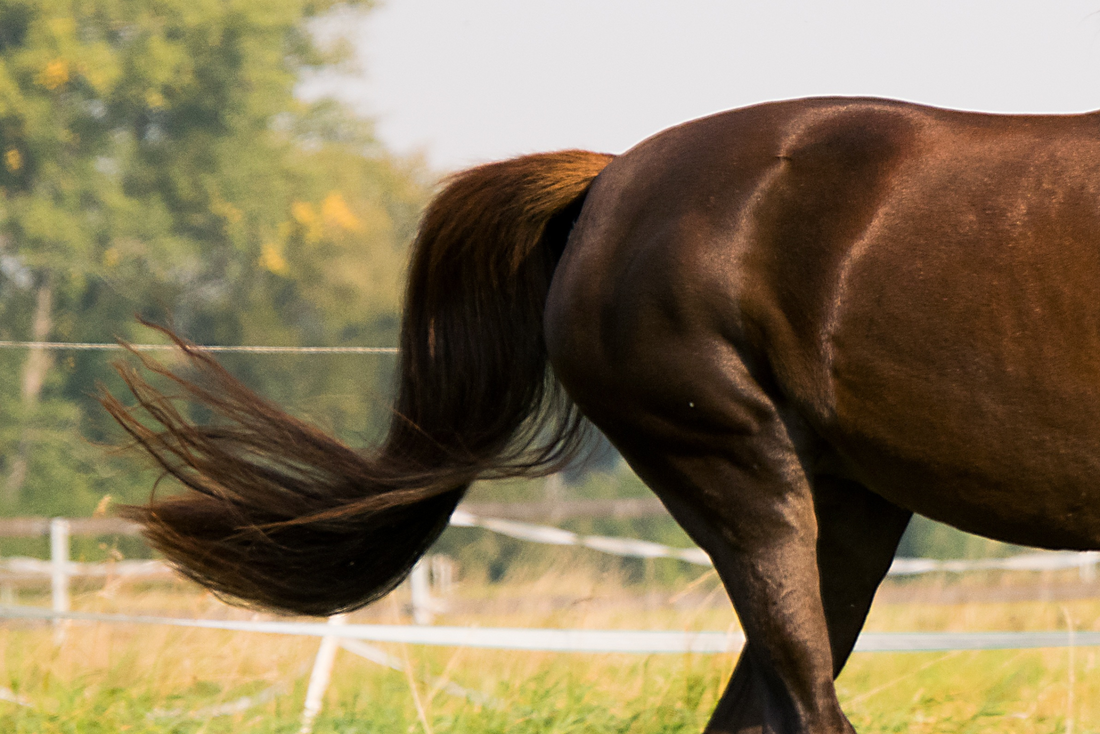Understanding Your Horse’s Digestive System – Why physiology informs feeding

Written by Briony Witherow MSc RNutr. FHEA
The more you understand about how your horse’s digestive system works, the easier it becomes to make informed feeding choices. From the teeth to the tail, every part of the tract is adapted for a high-fibre diet eaten in small amounts over long periods — and knowing this helps explain many of the “golden rules” of feeding.
A System Designed for Fibre
The equine digestive tract is about 30 metres long with a capacity of up to 190 litres, and 60% of it is devoted to fibre digestion. This tells us two things:
- Horses evolved to eat high-fibre plant material.
- Digestion takes time — 24 to 72 hours from start to finish.
The tract can be divided into the foregut (mouth to small intestine) and the hindgut (caecum and colon). Each has a distinct role in how food is broken down and nutrients are absorbed.
The Mouth – Chewing and Saliva
With their hypsodont (continually erupting) teeth and large number of molars and premolars, horses are built to grind fibrous feed. Chewing also triggers saliva production —around 30 litres per day on a forage diet — which lubricates food and helps buffer stomach acid.
Feeding link: More chewing equals more saliva. Long-stem forage encourages longer chew times than short-chop feeds or pellets, supporting both dental and gastric health.
The Stomach – Little and Often
The stomach is small (8–15 litres) and inelastic, producing gastric acid continuously. The glandular (lower) region has a protective lining, but the squamous (upper) region does not — instead, it relies on a near-constant trickle of fibre to form a physical barrier against acid splash.
Feeding link: Feed little and often, avoid large concentrate meals, and don’t leave long gaps without forage to reduce gastric ulcer risk.
The Small Intestine – Quick-Release Energy
At 15–22 metres long, the small intestine digests and absorbs starch, sugars, protein, fats, and some vitamins and minerals. Digestion here is rapid — food passes through in 45 minutes to two hours.
Feeding link: High-starch feeds release glucose quickly and can cause sharp energy peaks. For horses prone to excitable behaviour or metabolic issues, choose lower-starch rations and spread meals out.
The Hindgut – Fibre Fermentation
The caecum and colon are home to billions of microbes that ferment fibre into volatile fatty acids (VFAs) — a slow-release energy source. This process is sensitive to sudden dietary change; abrupt increases in starch or sugar can disrupt the microbial balance and lead to hindgut acidosis or colic.
Feeding link: Base the diet on forage, make changes gradually (2–3 weeks for forage, 10–14 days for concentrates), and keep meal sizes small to avoid starch overflow into the hindgut.
Why Management Matters
Understanding digestive physiology underlines the importance of:
- Providing at least 1.5% bodyweight (dry matter) in forage daily.
- Avoiding long fasting periods — aim for no more than 4–5 hours without forage.
- Selecting feed types and forms that suit your horse’s needs — coarse hay for chew time, chopped fibre for variety, beet pulp for moisture, processed cereals or oil for more concentrated energy where appropriate.
- Supporting the hindgut during change with good management and, where appropriate, targeted digestive supplements containing prebiotics or probiotics.
Take-Home Points
- Horses are designed to eat fibrous feed almost constantly — management should aim to reflect this.
- Chewing time and saliva production are essential for both dental and digestive health.
- The small stomach and rapid foregut transit make “little and often” feeding a must.
- The microbial hindgut thrives on consistency — make changes slowly and prioritise forage.
- Feeding to physiology reduces the risk of ulcers, colic, and behavioural issues while supporting optimal health and performance.
By working with the digestive system’s design rather than against it, you can make feeding choices that promote health, happiness, and long-term soundness.
